Case #14 (Part 2): Your Smart and Autonomous e-Creatures
When is a designer, maker, or operator of autonomous smart device liable for damage or cost? How is the world changing with more autonomous digital entities?
Design-Thinking starts with the user’s needs, creating products/services such as those showcased at the world’s largest event for electronics and digital technology, the CES.
This is a series of fun exercises in stepping back. Let’s discover “wider frames” – the larger context – beyond a situation’s need and intent.
We know every solution has its new costs, frictions, problems – and unintended consequences. In the momentum of execution. we narrow focus to results. Results with the least amount of resources, in the least amount of time. Necessarily, some bandwidth needed for analysis has been traded for speed in execution.
The digital world’s super-connectedness creates systems of systems. Truly disruptive innovations often create political and economic shifts. We create quite a new order of complexity and risks.
Design-thinking is convergent: it seeks solutions. So, how to keep aware of context? We spot the divergences beyond the current frames: what others miss – those barely discernible ripples, quite before they flow into currents then waves that the rest of the world swims.
This, then, is a way of seeing.
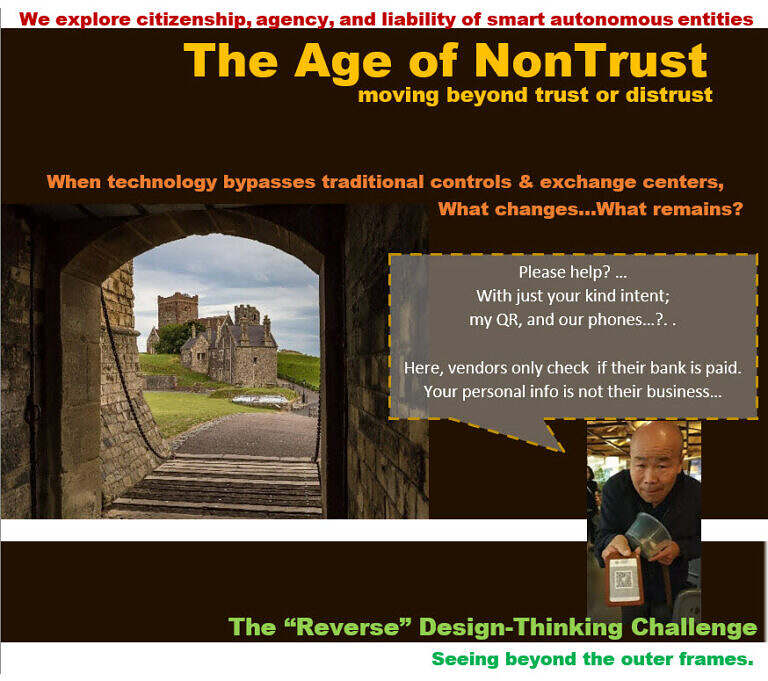
When is a designer, maker, or operator of autonomous smart device liable for damage or cost? How is the world changing with more autonomous digital entities?
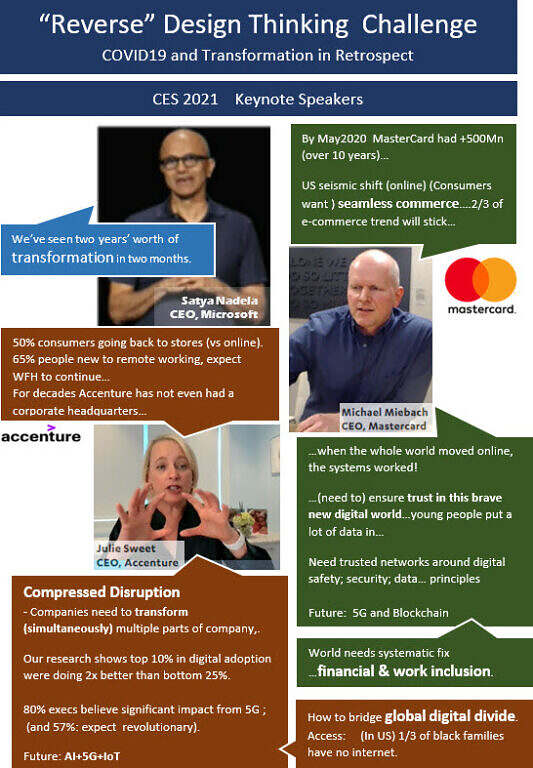
CASE #14 (Part 1): LinkedIn’s Dan Roth asks speakers on where technology will be… and the world? INSIGHTS+OUTLOOKThe digital buzz may distract us from noticing a marked divide between HAVE DIGITIZED’s and HAVE NOTS. Yet as we connect “everything and everyone”, the problem is quickly global. The concern is not merely an untapped market potential:…
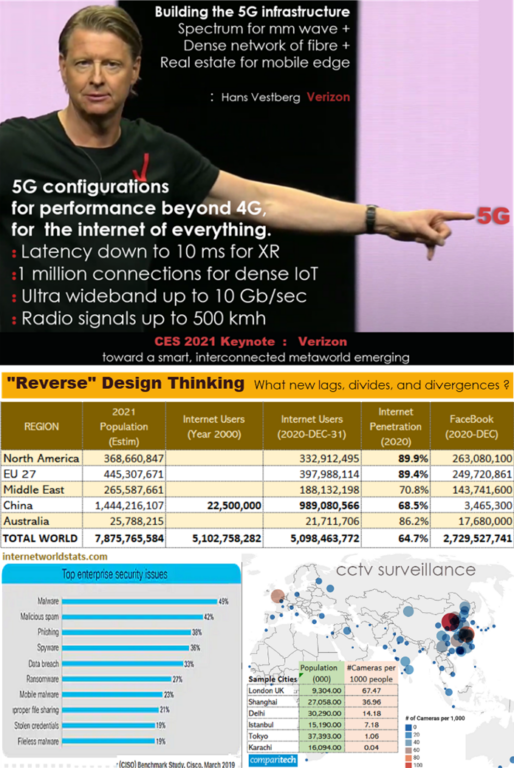
Telecoms are like highways in more ways than we’d admit: never the destination, nor even the view – yet there’s no getting there without ‘em. People think of 5G as merely faster phones. Verizon defines 5G in eight speed-throughput configurations that segment its markets.

CASE 11: Microsoft Data Campus (Quincy): “Over a half-million server computers… more (data) than 50,000 libraries of Congress….” CASE 12: HIBER: Nano satellites for the first truly global IoT network. Great case study for private-partnering (e.g. with SpaceX) at new scales. INSIGHTS+OUTLOOK:Only 5-10% of internet data searchable; 90% unsearchable in the private Deep Web and…
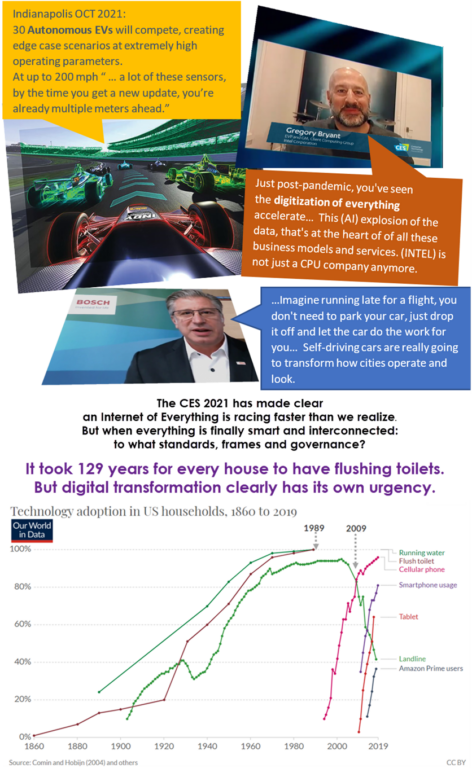
INSIGHT+OUTLOOK New Rules and Processes of coordination:Calling it an Internet of Things puts us off guard. Interconnecting autonomies logically lead to an internet of everything: all things, data, process, and people. Expect extensive partnerings and alliances, as we see in the autonomous electric vehicle case. Coordination and standardization lead to common platforms; but who sets…
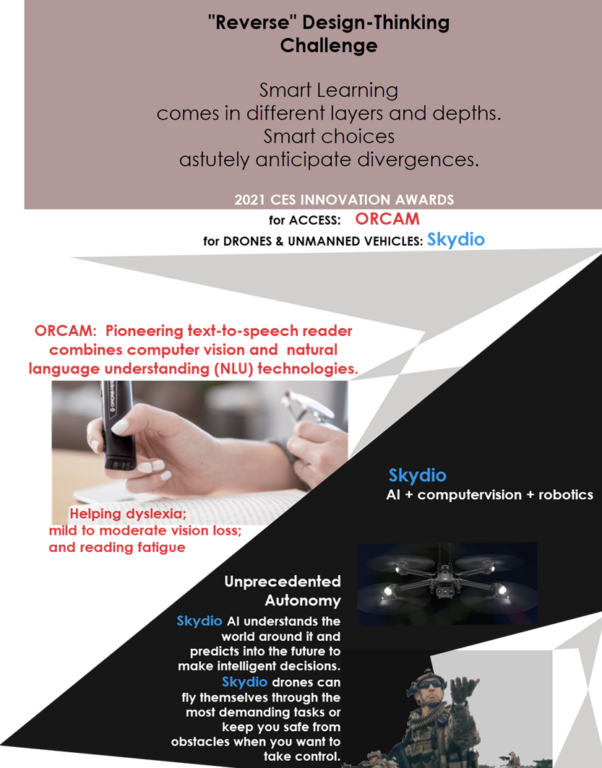
CASE #8: ORCAM: a handheld smart device that seamlessly reads text for people with visual or reading difficulties. CASE #9: SKYDIO: Autonomous drone can see, understand its complex surroundings; plan and fly a path avoiding obstacles in close-proximity. INSIGHT+OUTLOOK: Virtual reality and Robotics:I have a Need. I either bring the Value (of the object or…
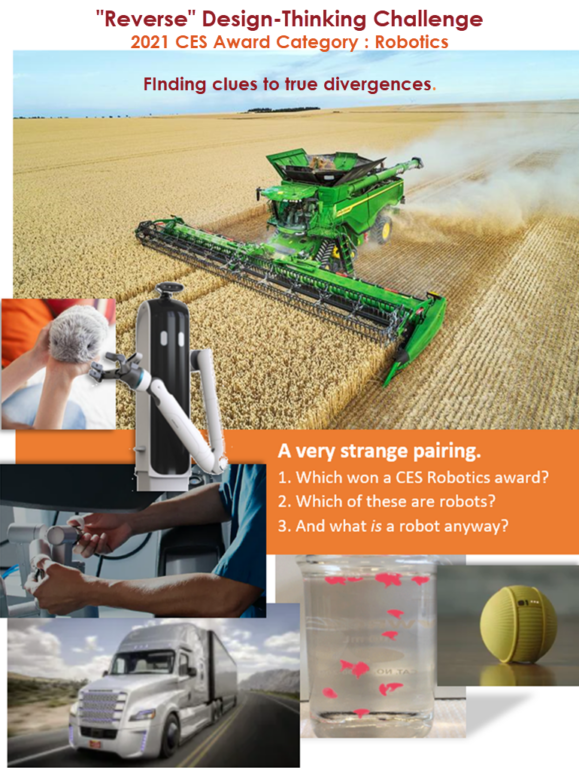
CASE #6: John Deere X-Series: Smart Farming with GPS, AI, and IoT: autonomous equipment for use in the harshest conditions globally.CASE #7: MOFLIN: Your AI pet simulates a living animal’s emotions & development, for the human need for interaction, entertainment. Featured on the graphic, clockwise from top: John Deere, awardee; Samsung Ballie; MIT nanoemulsion gel;…
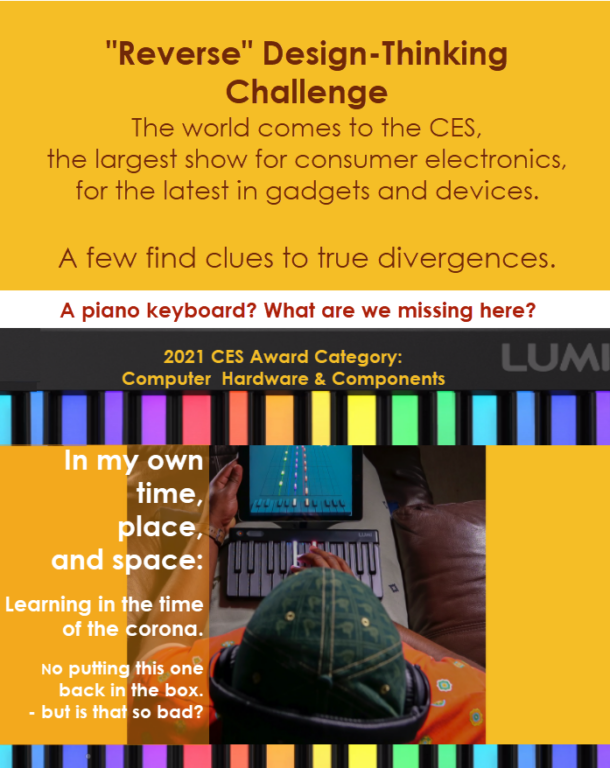
LUMI Keys: a self-directed music learning system integrated through sound, light, and color. INSIGHTS+OUTLOOK: The pandemic isolation has surely helped the market for personal entertainment and creativity. The LUMI is very directly hands-on, making for a fun way to learn and create music. An excellent application of technology and insights from gaming: fun challenges to…

Samsung puts a “PC in your pocket with power to do things unlike any PC”
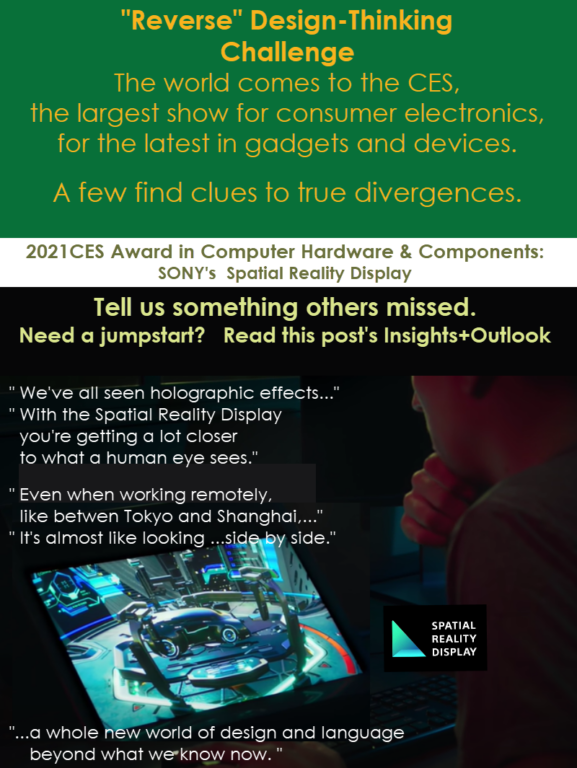
Where previous approaches attempt to project 3D recreations, Sony takes a different -and brilliant – tack based on understanding how our eyes and brain perceive.